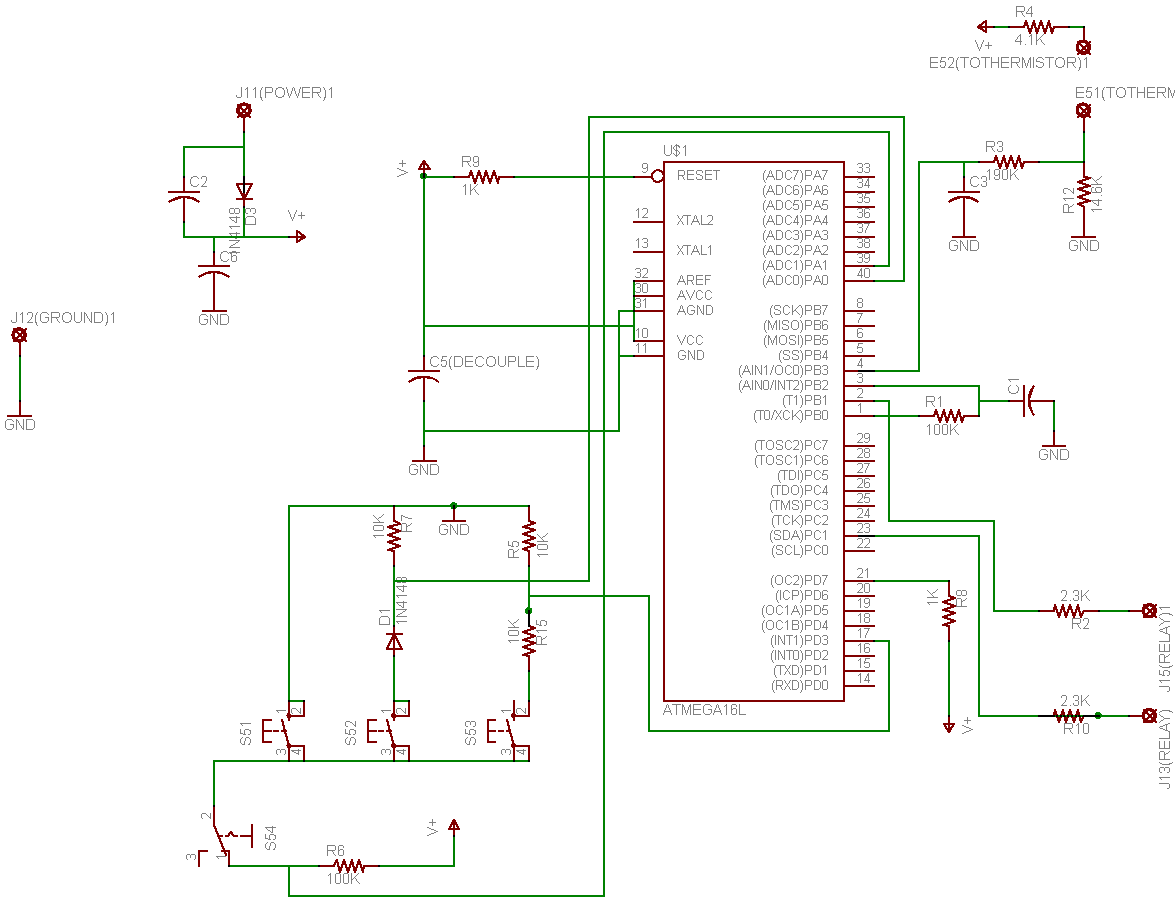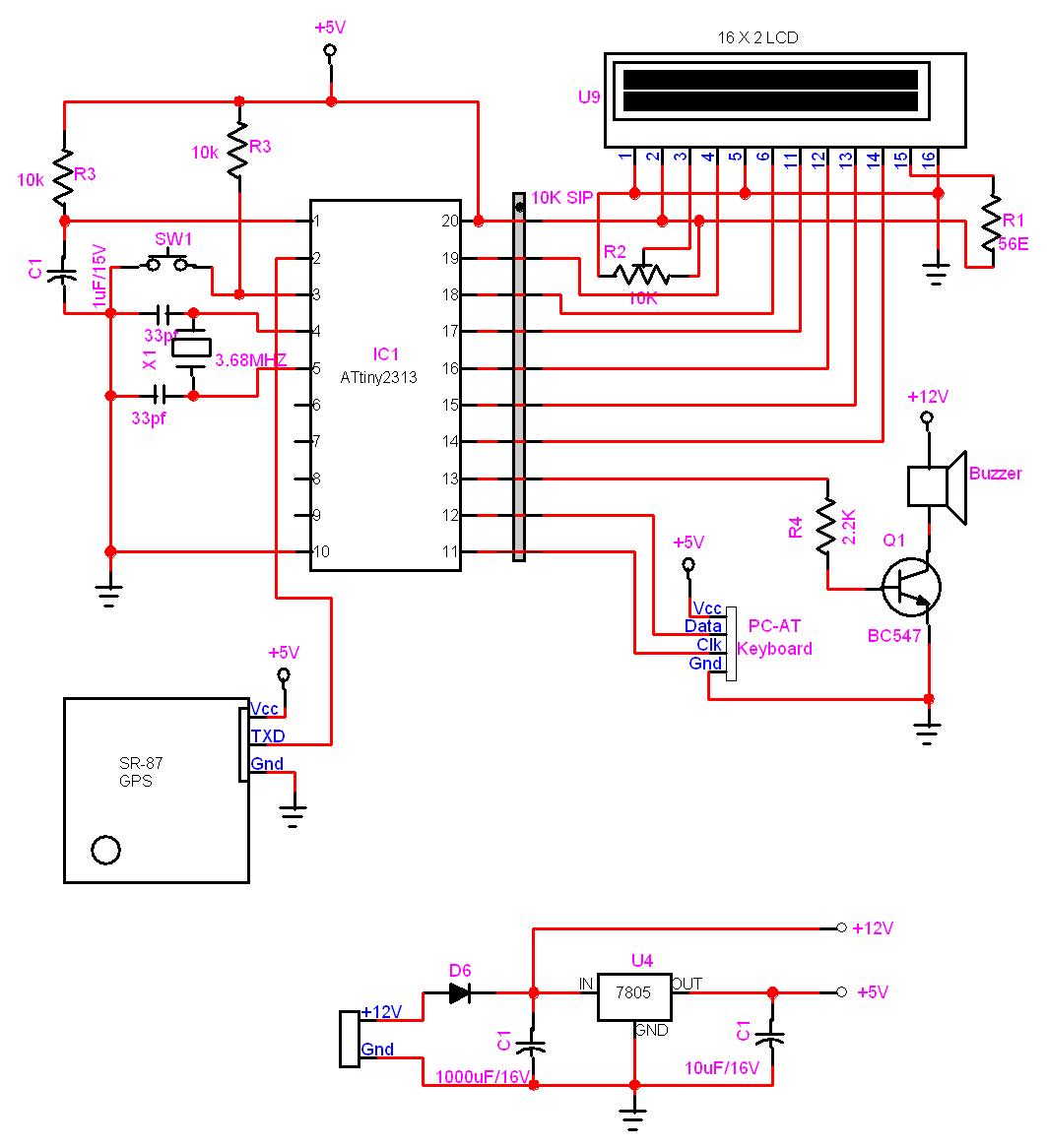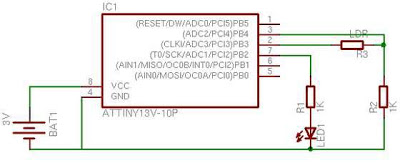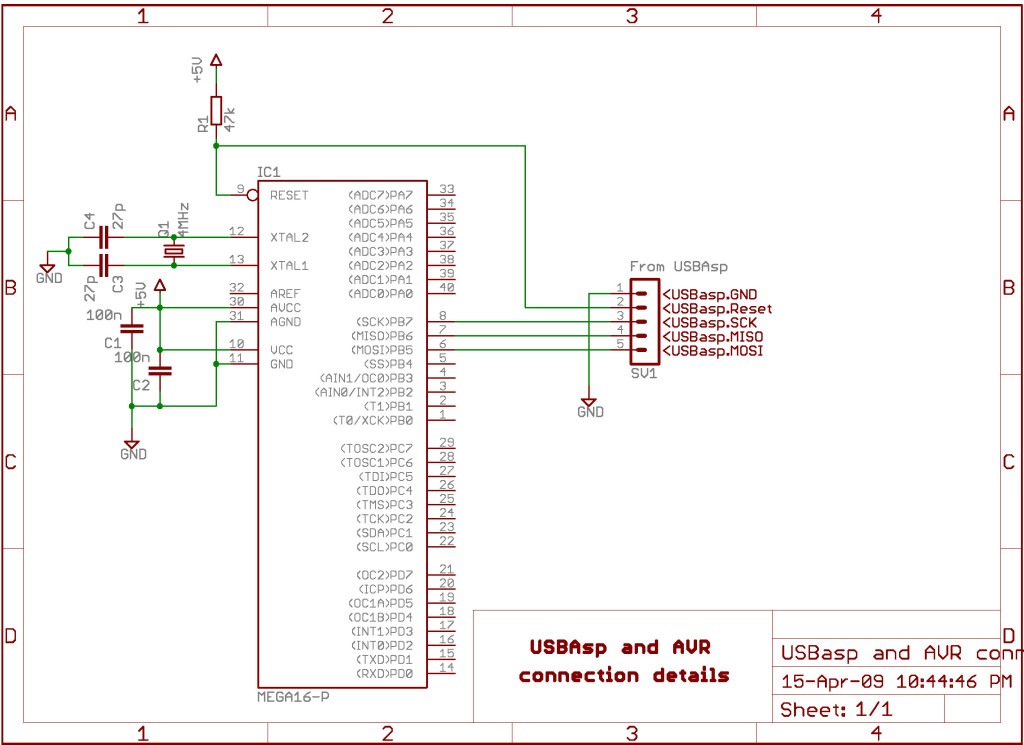
avr

Inspired by the work of Nanode and a recent Instructable, an AVR-based Ethernet board has been developed that can be programmed and utilized similarly to an Arduino. This straightforward design is based on the ATMega microcontroller and Microchip's ENC28J60 Ethernet controller, which operates via SPI. Implementing MQTT on this board can facilitate various options for home automation and remote sensor monitoring. Unlike the Nanode, this design is less complex and does not include Arduino header locations; however, all major pins are accessible through headers. A 25L512 chip is integrated to provide 512 Kbit of Serial EEPROM for storing MAC addresses and logged data if necessary. The dimensions of the PCB are compact, measuring only 80x50mm. The JeeNode is a wireless microcontroller board designed for a range of physical computing applications, including measuring and reporting environmental data such as temperature and humidity, as well as monitoring and controlling energy consumption in residential settings. The design was influenced by the Arduino Duemilanove, Uno boards, and the Real Bare Bones Board (RBBB) from Modern Device.
The AVR-based Ethernet board utilizes the ATMega microcontroller, which is known for its versatility and ease of programming, making it suitable for various applications in embedded systems. The ENC28J60 Ethernet controller is a cost-effective solution for enabling network connectivity, allowing the board to communicate over Ethernet. The SPI interface ensures high-speed communication between the microcontroller and the Ethernet controller, facilitating efficient data transfer.
The inclusion of a 25L512 Serial EEPROM chip allows for the storage of critical information such as MAC addresses, which are essential for network identification, as well as logged data that may be useful for applications involving sensor data collection or remote monitoring. The compact design of the PCB (80x50mm) makes it ideal for integration into smaller projects or devices where space is limited.
The JeeNode complements this Ethernet board by providing wireless capabilities, enabling the collection and transmission of environmental data without the constraints of wired connections. The combination of these two boards allows for a comprehensive approach to physical computing tasks, ranging from simple sensor monitoring to more complex home automation systems. The design philosophy draws from established Arduino boards, ensuring compatibility and ease of use for developers familiar with the Arduino ecosystem. Overall, this AVR-based Ethernet board represents a practical solution for developers looking to implement IoT applications with minimal complexity.Taking inspiration from the good folks at Nanode and an Instructable I saw recently, I`ve come up with another AVR based Ethernet board that can be programmed and used like an Arduino. It`s a simple design based on the ATMega and Microchip`s ENC28J60 Ethernet controller with SPI. Running MQTT on one of these will open up a few options for h omeautomation and remote sensor monitoring. It`s not as complex as the Nanode. It doesn`t have the Arduino header locations, but all the major pins are available at headers. There is a 25L512 chip providing 512 Kbit Serial EEPROM for MAC addresses and logged data if one needs it. The PCB is only 80x50mm in size! The JeeNode is a wireless micro-controller board designed for a variety of Physical Computing tasks. From measuring and reporting temperature, humidity, and other environmental data to tracking and controlling energy consumption around the house.
It was inspired by the Arduino Duemilanove and Uno boards, and by the Real Bare Bones Board (RBBB) from Modern Device. 🔗 External reference
The AVR-based Ethernet board utilizes the ATMega microcontroller, which is known for its versatility and ease of programming, making it suitable for various applications in embedded systems. The ENC28J60 Ethernet controller is a cost-effective solution for enabling network connectivity, allowing the board to communicate over Ethernet. The SPI interface ensures high-speed communication between the microcontroller and the Ethernet controller, facilitating efficient data transfer.
The inclusion of a 25L512 Serial EEPROM chip allows for the storage of critical information such as MAC addresses, which are essential for network identification, as well as logged data that may be useful for applications involving sensor data collection or remote monitoring. The compact design of the PCB (80x50mm) makes it ideal for integration into smaller projects or devices where space is limited.
The JeeNode complements this Ethernet board by providing wireless capabilities, enabling the collection and transmission of environmental data without the constraints of wired connections. The combination of these two boards allows for a comprehensive approach to physical computing tasks, ranging from simple sensor monitoring to more complex home automation systems. The design philosophy draws from established Arduino boards, ensuring compatibility and ease of use for developers familiar with the Arduino ecosystem. Overall, this AVR-based Ethernet board represents a practical solution for developers looking to implement IoT applications with minimal complexity.Taking inspiration from the good folks at Nanode and an Instructable I saw recently, I`ve come up with another AVR based Ethernet board that can be programmed and used like an Arduino. It`s a simple design based on the ATMega and Microchip`s ENC28J60 Ethernet controller with SPI. Running MQTT on one of these will open up a few options for h omeautomation and remote sensor monitoring. It`s not as complex as the Nanode. It doesn`t have the Arduino header locations, but all the major pins are available at headers. There is a 25L512 chip providing 512 Kbit Serial EEPROM for MAC addresses and logged data if one needs it. The PCB is only 80x50mm in size! The JeeNode is a wireless micro-controller board designed for a variety of Physical Computing tasks. From measuring and reporting temperature, humidity, and other environmental data to tracking and controlling energy consumption around the house.
It was inspired by the Arduino Duemilanove and Uno boards, and by the Real Bare Bones Board (RBBB) from Modern Device. 🔗 External reference





